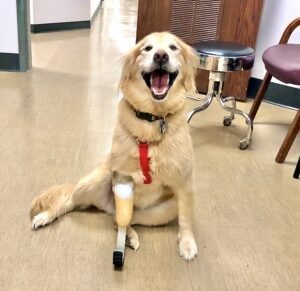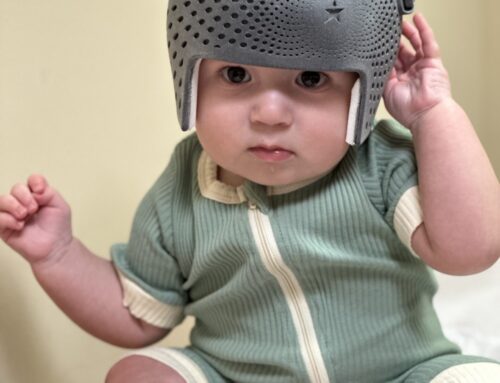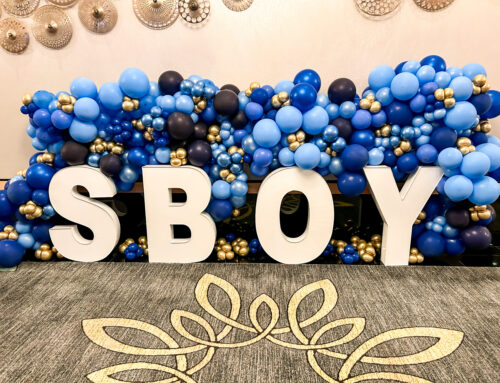Prosthetic dog leg leads to new lease on life after partial leg amputation from cancerous tumor.
After a cancerous tumor led to a partial leg amputation for 7-year-old Golden Retriever, Ava, her owners were unaware that prosthetic dog legs were a possibility. While visiting their veterinarian’s office, they came across an article in an animal magazine. The article highlighted prosthetic devices for animals, and they knew exactly what they had to do.
The first step to seeing if your pet is a candidate to receive a prosthetic dog leg, is to make an evaluation with a licensed prosthetist. Researching prosthetic facilities in their area led Ava’s owners to Westcoast Brace & Limb (WCBL). An evaluation proved Ava to be a good candidate for a dog prosthesis.
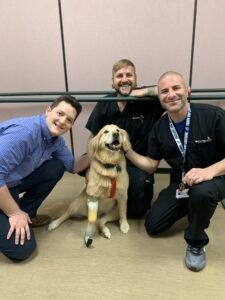
At Westcoast Brace & Limb, our team of pet brace and pet prosthetic experts take a special approach when working with your pets.
Working with WCBL prosthetist, Jared Caya, along with other team members, Ava has been able to walk on all four legs again. Ava accepted her new prosthetic dog leg very easily and is adjusting fantastically. “The end of Ava’s amputated limb is pretty boney, so we need to ensure she had extra padding on the bottom of her prosthesis, allowing her to put all of her weight onto her limb without discomfort. Ava’s prosthesis is made of a laminated lightweight and very durable plastic. We used the same joints and materials that are used on human orthotics (braces). She also has a custom prosthetic foot that is very similar to a human prosthetic running foot.” Caya says.
WCBL strives to provide maximum limb performance with prosthetic dog leg.
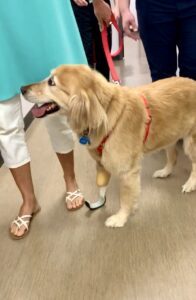
With a prosthetic dog leg, normal weight distribution occurs on all 4 limbs. As a result, this helps prevent overuse syndrome on the animal’s sound side. The design used typically eliminates the need for a harness worn over the back of the pet. By evaluating the patient in office, our prosthetists achieve an exact fit for the prosthetic device. Therefore, allowing the best form and most function possible.
When a dog receives a prosthetic leg, the assimilation process can take several weeks. This time allows the dog to accept and feel comfortable using the prosthesis. It can eventually become a natural part of the dog’s everyday life.
We achieve this goal by offering the latest prosthetic innovations and technology. But, it is not all about the device, it is also about the connection. Our highly skilled and experienced practitioners form a relationship with every one of their patients, human and animal alike. As a result, we are helping “man’s best friend” live their lives to the fullest!


